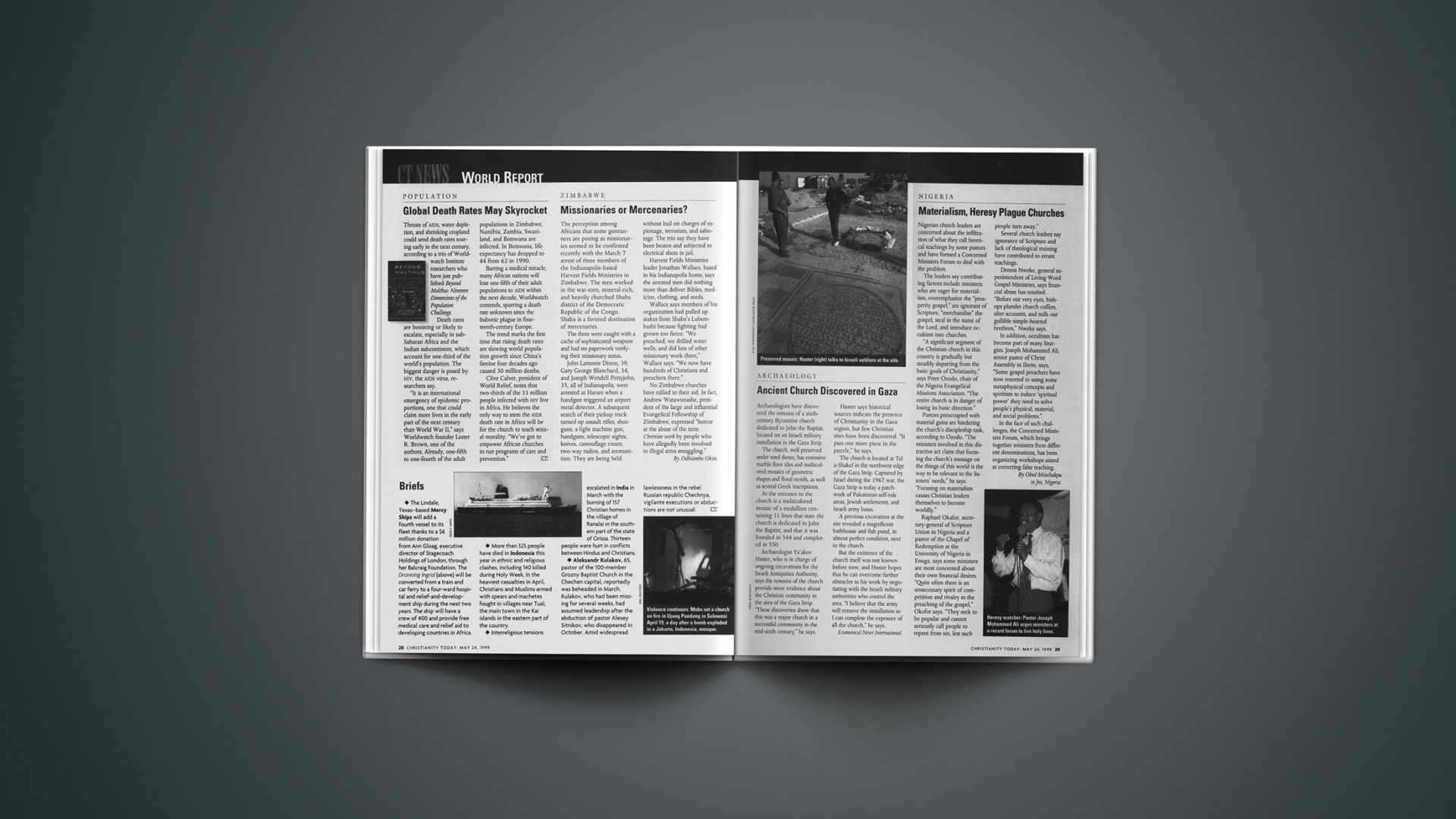Archaeologists have discovered the remains of a sixth-century Byzantine church dedicated to John the Baptist, located on an Israeli military installation in the Gaza Strip.
The church, well preserved under sand dunes, has extensive marble floor tiles and multicolored mosaics of geometric shapes and floral motifs, as well as several Greek inscriptions.
At the entrance to the church is a multicolored mosaic of a medallion containing 11 lines that state the church is dedicated to John the Baptist, and that it was founded in 544 and completed in 550.
Archaeologist Ya’akov Huster, who is in charge of ongoing excavations for the Israeli Antiquities Authority, says the remains of the church provide more evidence about the Christian community in the area of the Gaza Strip. “These discoveries show that this was a major church in a successful community in the mid-sixth century,” he says.
Huster says historical sources indicate the presence of Christianity in the Gaza region, but few Christian sites have been discovered. “It puts one more piece in the puzzle,” he says.
The church is located at Tel a-Shakef in the northwest edge of the Gaza Strip. Captured by Israel during the 1967 war, the Gaza Strip is today a patchwork of Palestinian self-rule areas, Jewish settlements, and Israeli army bases.
A previous excavation at the site revealed a magnificent bathhouse and fish pond, in almost perfect condition, next to the church.
But the existence of the church itself was not known before now, and Huster hopes that he can overcome further obstacles to his work by negotiating with the Israeli military authorities who control the area. “I believe that the army will remove the installation so I can complete the exposure of all the church,” he says.
Copyright © 1999 Christianity Today. Click for reprint information.










